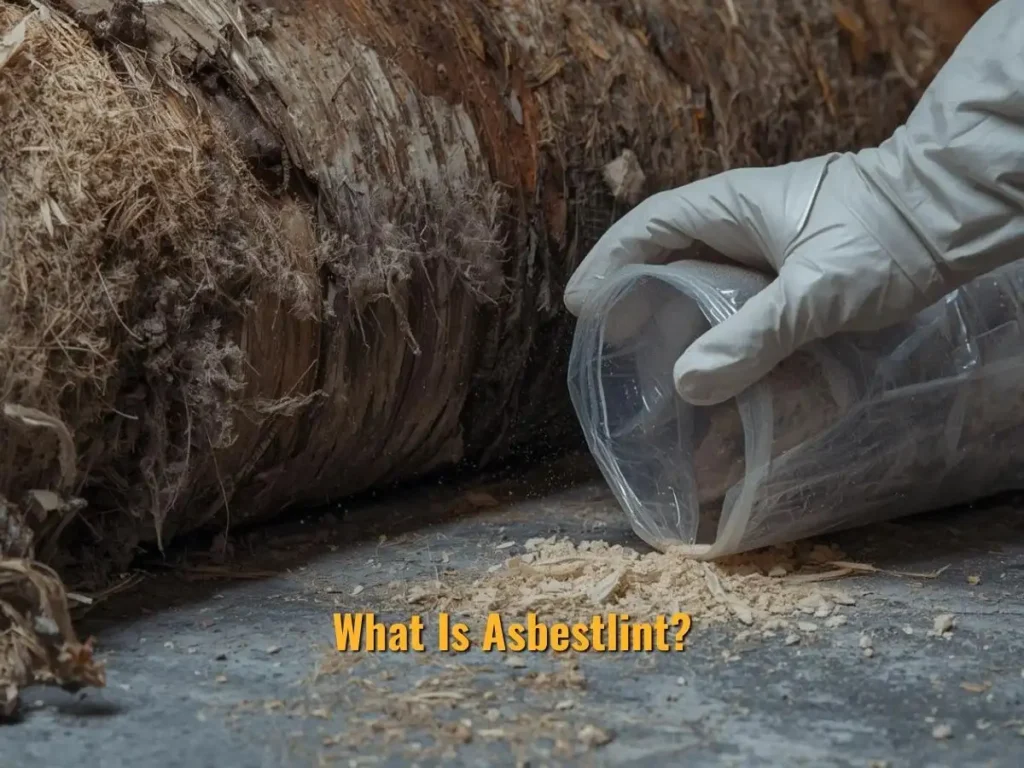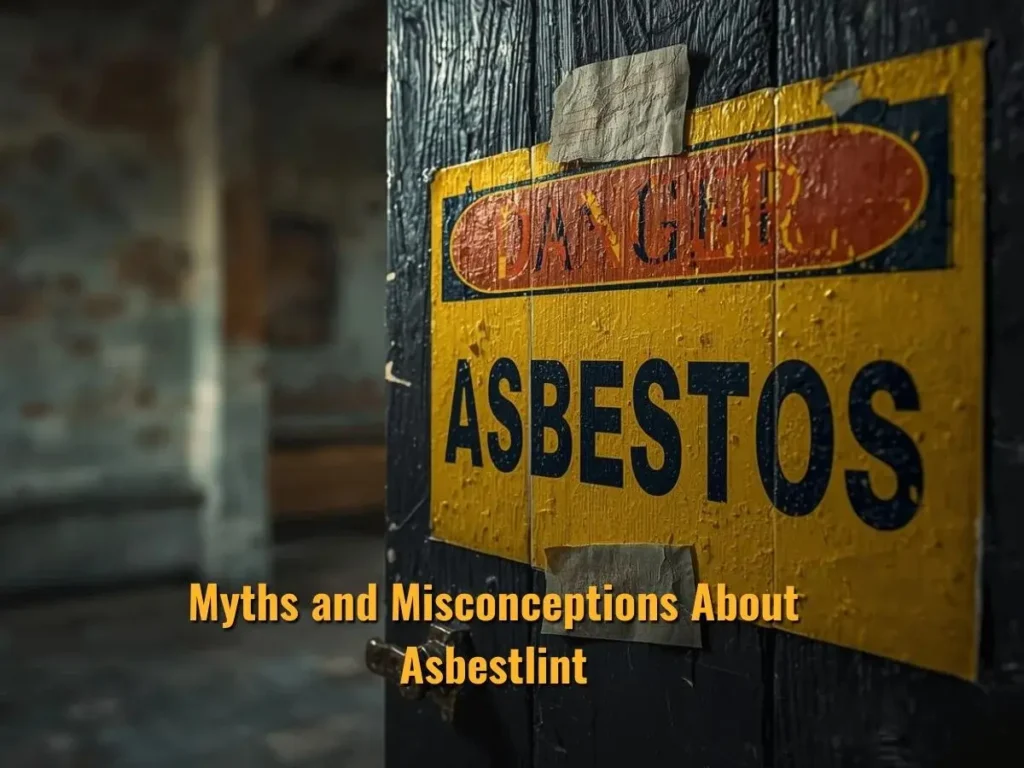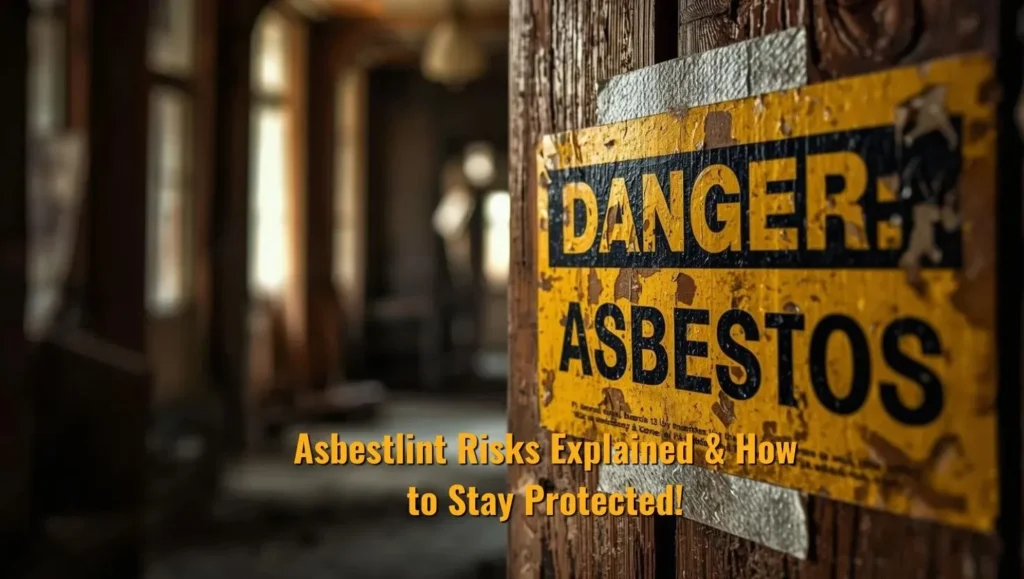Introduction:
Asbestlint refers to asbestos dust that has been emitted during the degradation of the wall. These small fibres are not visible to the naked eye but are harmful if inhaled.
Exposure has been associated with diseases including mesothelioma, lung cancer, and asbestosis. Due to its hidden nature, it remains an issue in older housing, as well as in academic and work facilities.
In this post, we will inform you about what it is, where to find it, its dangers, and how to stay safe through safe practices and professional advice.
What Is Asbestlint?

The Asbestlint refers to friable Asbestos fibres that shed from friable asbestos-containing materials.
For years, manufacturers used asbestos as a component in products such as insulation, roofing, floor tiles, and pipe coverings due to its strength and resistance to heat. Those materials degrade, and fibres end up in the air.
Asbestlint is not always an immediate threat; However, when you inhale the tiny fibres, it presents a health hazard. Knowing where it comes from is key to regulating where it goes.
Why Asbestos Is Dangerous?
Inhaling asbestos fibres is a risk. These fibres become lodged in the lungs and cause damage over time.
Asbestos-related diseases can also have very long latency periods, with symptoms sometimes not developing for months or years in some cases. Mesothelioma, lung cancer and asbestosis are all tied to exposure.
Construction, renovation and demolition workers are particularly at risk, but homeowners can also become exposed while doing simple home renovation projects.
Any exposure to asbestos is unsafe, and even a brief exposure can result in long-term health conditions. It, therefore, calls for prevention and control.
Where is Asbestlint commonly found?
We regularly find asbestos in older structures, including buildings that contain it.
It can exist in the house on textured ceilings, attic insulation, vinyl floor tiles and boiler pipe coverings. The industry often used asbestos in HVAC ductwork, roofing, and machinery insulation in industrial environments. Experts presume that builders used some asbestos materials in most homes they constructed before the early 1980s.
To avoid accidentally disturbing these areas during maintenance or renovations, it is beneficial to be aware of them in advance. Knowing where these sites are located can help minimise unnecessary exposure.
Identifying Potential Asbestlint
There are visual clues that indicate the presence of asbestos. Deteriorating insulation, damaged ceiling tiles or old adhesive residue under old flooring are all red flags. But asbestos is not be visually confirmed.
The only way to be sure if a material contains asbestos is to have it tested in a laboratory. Accredited asbestos surveyors know how to safely take samples and determine the threat level.
Inspection services include professional surveys that detect the presence of asbestos. If your professional finds asbestos, they will write up a suggested plan of action, outlining the type of asbestos at your property and recommending encapsulation or removal.
How to Stay Protected from Asbestlint
When dealing with suspect asbestos, the number one rule is not to disturb it. Work should cease directly, and the region must be isolated to avoid contamination.
It is not safe to clean with household vacuums or sweep because it can spread fibres into the air more. Professional contractors are trained to work with asbestos, so it’s secure.
Encapsulation seals the material to inhibit the release of fibres, while removal completely removes the source of the material.
Both methods require the use of clunky protective equipment and specialised tools, as well as post-clearance testing, to ensure safety. Seeking help from an expert is the best course of action.
Regulations and Compliance
The regulations differ by country, but all highlight the stringent safety measures. In the US, asbestos is regulated by the EPA and OSHA.
The United Kingdom follows the Control of Asbestos Regulations 2012, with the Health and Safety Executive (HSE) serving as the enforcing authority. In Australia, SafeWork actively enforces stringent regulations regarding asbestos.
These regulations and laws mandate that qualified personnel handle and dispose of the materials.
They also require air monitoring and clearance testing to ensure public health protection. Checking local regulations before any renovation or demolition is a crucial step in ensuring compliance and safety.
Everyday Precautions to Limit Asbestlint Exposure
Practical habits for safer living
Although many folks only consider asbestos when finishing a renovation, there are some small everyday habits that can also help minimise the risk of exposure.
Being vigilant about dusting with damp cloths, using high-efficiency vacuum filters, and not scuffing up old walls or ceilings when cleaning helps keep fibres from going airborne.
Awareness in routine activities
Even simple tasks, such as drilling holes, sanding, or even patching old insulation, can disturb asbestos that’s hidden somewhere in the building, she says.
If your house was built before the 1990s, assume that some materials may contain asbestos and take appropriate action accordingly.
By consulting professionals before getting started, you not only maintain your own health but also protect yourself from potential legal issues.
Why this matters
Most people ignore these everyday triggers, but they are the leading causes of accidental exposure. A series of small but steadily applied steps adds an extra layer of defence and helps you maintain a better environment.
Myths and Misconceptions About Asbestlint

Clearing up common confusion
One of the most challenging aspects of raising awareness about Asbestlint is the widespread dissemination of myths.
Some people think asbestos is found only in old factories; others imagine that small doses over an afternoon of exposure won’t do anything to them.
For in truth asbestos fibres can lurk in homes, schools and offices erected before restrictions became stricter and brief exposure may compromise lung health.
False sense of safety
Another misconception is the belief that if a material appears clean and undamaged, it is harmless.
The reality is that you can release fibres during simple activities like drilling and sanding, even when surfaces appear intact. However, as always, you still must professionally test it; it’s never safe to eyeball something.
Why debunking myths matters
People tend to downplay the risk, so they delay testing their homes or attempt to manage the issue themselves, thereby increasing the threat.
Unless you can see through that and know the truth, then you’re not going to be able to make an intelligent decision about protecting your own health and the health of your family.
Conclusion:
Asbestlint presents a deadly hazard to the general public, but you can stay safe most effectively by knowing where you can most commonly find it and what you can do to address it.
There’s less risk as long as you do not disturb them, but when you do, they can emit invisible fibers that persist in the air and damage your lungs over time.
If you suspect asbestos in your home or place of employment, do not attempt to remove or disturb the asbestos, but have a licensed asbestos survey conducted.
Professional instruction equals safety and conformity. Be proactive and download our Asbestos Safety Checklist to keep yourself safe during renovations or when inspecting.
FAQs
Is asbestlint always dangerous?
Not always. Materials remain safe if you leave them alone; however, when you disturb the fibres, they become unsafe.
Can I remove asbestos myself?
Don’t remove them yourself; it’s hazardous and often illegal. Always utilise licensed professionals.
What does asbestos look like?
It may resemble fibrous insulation, tiles, or textured paint, but its presence can only be confirmed by testing.
How much does removal cost?
Prices fluctuate based on location, type of material and disposal needs. Multiple quotes are recommended.
What health hazards does Asbestlint exposure cause?
Asbestin inhalation results in Asbestosis, lung cancer and mesothelioma.

